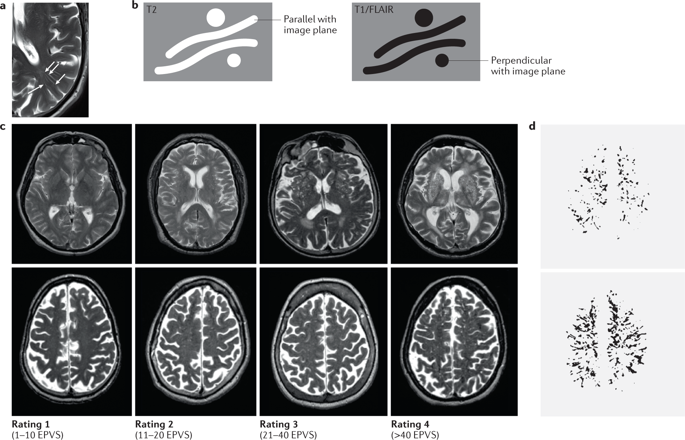当前位置:
X-MOL 学术
›
Nat. Rev. Neurol.
›
论文详情
Our official English website, www.x-mol.net, welcomes your
feedback! (Note: you will need to create a separate account there.)
Perivascular spaces in the brain: anatomy, physiology and pathology.
Nature Reviews Neurology ( IF 28.2 ) Pub Date : 2020-02-24 , DOI: 10.1038/s41582-020-0312-z Joanna M Wardlaw 1 , Helene Benveniste 2 , Maiken Nedergaard 3, 4 , Berislav V Zlokovic 5, 6 , Humberto Mestre 4 , Hedok Lee 2 , Fergus N Doubal 1 , Rosalind Brown 1 , Joel Ramirez 7, 8, 9 , Bradley J MacIntosh 8, 10 , Allen Tannenbaum 11 , Lucia Ballerini 1 , Ravi L Rungta 12 , Davide Boido 12 , Melanie Sweeney 5, 6 , Axel Montagne 5, 6 , Serge Charpak 12 , Anne Joutel 13 , Kenneth J Smith 14 , Sandra E Black 7, 8, 9 ,
Nature Reviews Neurology ( IF 28.2 ) Pub Date : 2020-02-24 , DOI: 10.1038/s41582-020-0312-z Joanna M Wardlaw 1 , Helene Benveniste 2 , Maiken Nedergaard 3, 4 , Berislav V Zlokovic 5, 6 , Humberto Mestre 4 , Hedok Lee 2 , Fergus N Doubal 1 , Rosalind Brown 1 , Joel Ramirez 7, 8, 9 , Bradley J MacIntosh 8, 10 , Allen Tannenbaum 11 , Lucia Ballerini 1 , Ravi L Rungta 12 , Davide Boido 12 , Melanie Sweeney 5, 6 , Axel Montagne 5, 6 , Serge Charpak 12 , Anne Joutel 13 , Kenneth J Smith 14 , Sandra E Black 7, 8, 9 ,
Affiliation

|
Perivascular spaces include a variety of passageways around arterioles, capillaries and venules in the brain, along which a range of substances can move. Although perivascular spaces were first identified over 150 years ago, they have come to prominence recently owing to advances in knowledge of their roles in clearance of interstitial fluid and waste from the brain, particularly during sleep, and in the pathogenesis of small vessel disease, Alzheimer disease and other neurodegenerative and inflammatory disorders. Experimental advances have facilitated in vivo studies of perivascular space function in intact rodent models during wakefulness and sleep, and MRI in humans has enabled perivascular space morphology to be related to cognitive function, vascular risk factors, vascular and neurodegenerative brain lesions, sleep patterns and cerebral haemodynamics. Many questions about perivascular spaces remain, but what is now clear is that normal perivascular space function is important for maintaining brain health. Here, we review perivascular space anatomy, physiology and pathology, particularly as seen with MRI in humans, and consider translation from models to humans to highlight knowns, unknowns, controversies and clinical relevance.
中文翻译:

大脑中的血管周围空间:解剖学、生理学和病理学。
血管周围空间包括大脑中小动脉、毛细血管和小静脉周围的各种通道,一系列物质可以沿着这些通道移动。尽管血管周围空间在 150 多年前首次被发现,但由于人们对它们在清除脑间质液和废物中的作用(特别是在睡眠期间)以及在小血管疾病阿尔茨海默病的发病机制中的作用认识的进步,它们最近变得突出疾病和其他神经退行性和炎症性疾病。实验进展促进了在清醒和睡眠期间完整啮齿动物模型中血管周围空间功能的体内研究,人类的 MRI 使血管周围空间形态与认知功能、血管危险因素、血管和神经退行性脑损伤相关,睡眠模式和脑血流动力学。关于血管周围空间的许多问题仍然存在,但现在很清楚的是,正常的血管周围空间功能对于维持大脑健康很重要。在这里,我们回顾了血管周围空间的解剖学、生理学和病理学,特别是在人类 MRI 中所见,并考虑从模型到人类的转换,以突出已知、未知、争议和临床相关性。
更新日期:2020-02-24
中文翻译:

大脑中的血管周围空间:解剖学、生理学和病理学。
血管周围空间包括大脑中小动脉、毛细血管和小静脉周围的各种通道,一系列物质可以沿着这些通道移动。尽管血管周围空间在 150 多年前首次被发现,但由于人们对它们在清除脑间质液和废物中的作用(特别是在睡眠期间)以及在小血管疾病阿尔茨海默病的发病机制中的作用认识的进步,它们最近变得突出疾病和其他神经退行性和炎症性疾病。实验进展促进了在清醒和睡眠期间完整啮齿动物模型中血管周围空间功能的体内研究,人类的 MRI 使血管周围空间形态与认知功能、血管危险因素、血管和神经退行性脑损伤相关,睡眠模式和脑血流动力学。关于血管周围空间的许多问题仍然存在,但现在很清楚的是,正常的血管周围空间功能对于维持大脑健康很重要。在这里,我们回顾了血管周围空间的解剖学、生理学和病理学,特别是在人类 MRI 中所见,并考虑从模型到人类的转换,以突出已知、未知、争议和临床相关性。











































 京公网安备 11010802027423号
京公网安备 11010802027423号